11 Cornstarch Substitutes for Cooking and Baking

Looking for a great cornstarch substitute? Cornstarch is a kitchen staple perfect for use as a thickening agent for gravy and stews, and it creates the perfect crispy fried coating, but you may not always have it on hand. In addition, you may be looking for a substitution due to allergies, of which corn is a common one.
If you’ve managed to empty out that trusty trademark yellow container of cornstarch and find yourself in a pinch looking for something else to thicken soups, sauces or fillings, there are a number of useful alternatives. We’ve rounded up a few great cornstarch substitutes as well as suggestions on getting the best results.
Jump to Section
What Is Cornstarch?
Cornstarch is the finely ground, starchy inner endosperm of a corn kernel. What we know as the popular cooking ingredient has its roots in the mid-19th century when it was first trademarked as a pantry staple by an American inventor and manufacturer named Thomas Kingsford.
His company later merged with the Argo company in 1899, which is the source of those bright yellow containers you still find on shelves today.
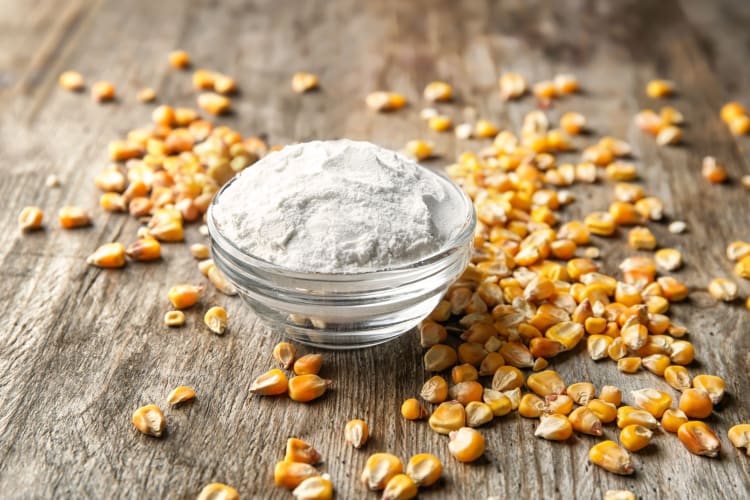
Purpose of Cornstarch in Cooking and Baking
Cooking uses for cornstarch are innumerable. When combined with water to create a paste, it can be added to anything that needs thickening, such as sauces, gravies and stews. It’s also helpful for creating that perfect crispy batter for fried chicken, fish and other treats.
Cornstarch is also a great addition to baked goods. In fact, it’s what gives shortbread its trademark crumbled texture. As a thickening agent, it’s crucial to puddings, custards and pie fillings. Unlike flour and other types of thickening agents, cornstarch thickens while remaining clear, allowing for the perfect texture in these sweet fillings.
A great way to learn about ingredient substitutes is to enroll in a cooking class near you. From cooking classes in Vancouver to cooking classes in Portland, and even online cooking classes, you'll find many exciting and educational experiences to enjoy and learn from, no matter where you are.
So now that you’re aware of just a few of the uses of this kitchen staple, you may be asking yourself: "What can I substitute for cornstarch?" Luckily for you, there are a number of great cornstarch substitutes to choose from.
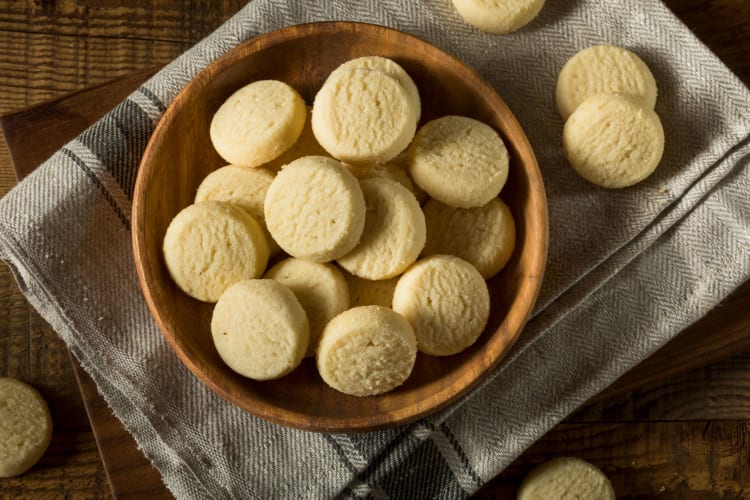
Cornstarch Substitutes
1. Flour
If you've been wondering: "Can I substitute flour for cornstarch?", the answer is yes! Almost everyone's pantry contains flour, which can make an excellent cornstarch substitute.
While flour is the most common cornstarch substitute for thickening, its thickening abilities are slightly weaker than those of cornstarch. Therefore, aim for a 2:1 ratio, with double the flour needed for the amount of cornstarch required.
To prevent clumpiness with this cornstarch replacement in baking, mix the flour with a bit of cold water before adding it in. Your results will be more opaque than when using cornstarch, which makes it great for gravies and stews but less ideal as a cornstarch substitute for clear liquids or pie fillings.
Also keep in mind that flour, which comes from wheat, is not gluten-free like cornstarch, so it won't work as a substitution for cornstarch in gluten-free baking. However, it will be a useful cornstarch substitute if corn allergies are present. Flour contains slightly more protein and fiber than cornstarch as well, which may be beneficial if you’re keeping an eye on nutrients.
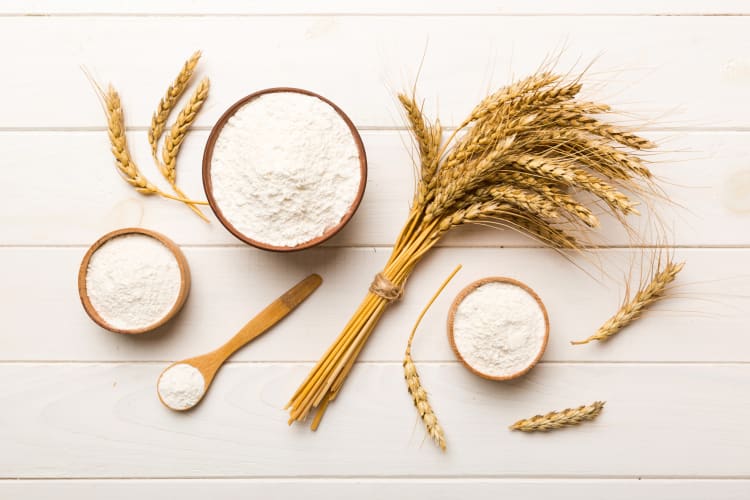
2. Potato Starch
While not as common as flour in American kitchens, potato starch — created by releasing the starch of crushed potatoes and drying it into a powder — is an excellent, flavorless cornstarch substitute. Potato starch is especially great for use in cakes, where it helps retain moisture longer than cakes made with flour alone.
You will need about a 1:1 ratio of potato starch to the cornstarch required when using this cornstarch substitute. You’ll achieve the best results if you add the potato starch later in the cooking process — this is because high heat makes it far more water-soluble, lessening its thickening properties over time.
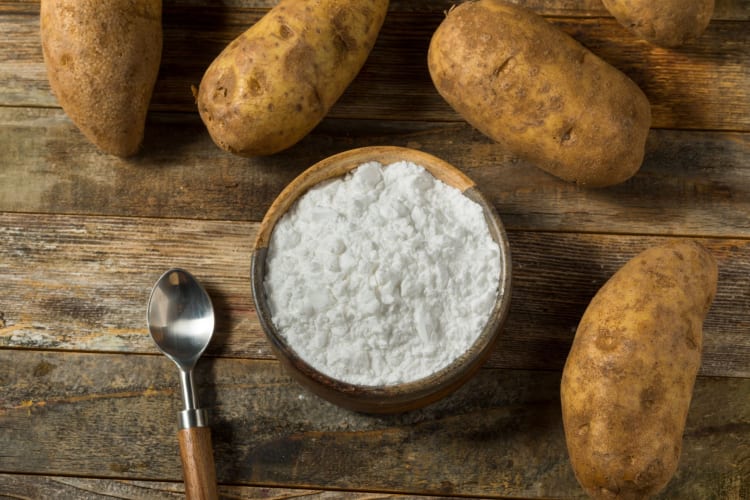
3. Rice Flour
A common ingredient in Asian cuisines, rice flour, made from finely ground rice, is a favorite gluten-free substitute for regular flour. It's also a perfect cornstarch substitute. Rice flour is particularly good for baking and creating a crispy batter for deep-fried foods.
Unlike other subs for cornstarch, like potato flour and wheat flour, rice flour will remain clear and colorless when heated, making it a great choice when creating clearer sauces and pie fillings. It also contains more protein and dietary fiber than cornstarch.
Be aware that you’ll need twice as much rice flour than cornstarch when making the swap, which might be challenging since rice flour is more expensive than other varieties of flour or cornstarch substitutes.
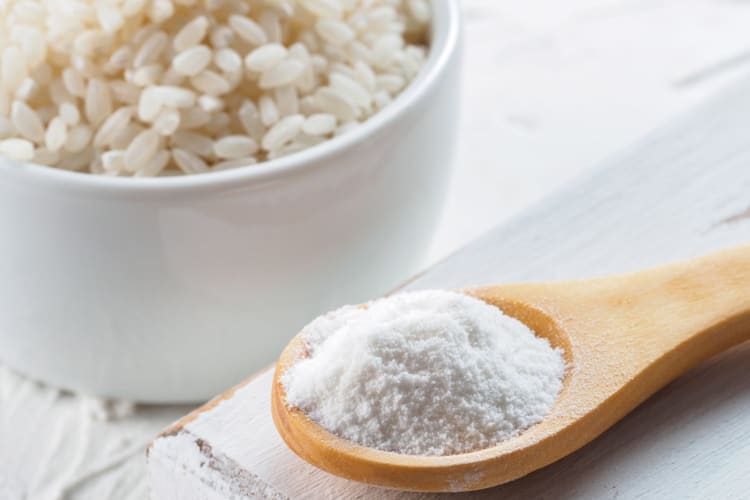
4. Tapioca Flour
This familiar substance to boba tea fans also comes in a ground flour form and can be a great substitute for cornstarch. Extracted from the ground roots of the cassava plant found in South America, tapioca flour is excellent for puddings, pie fillings and sweet sauces since it already has a hint of sweetness to it.
It’s also a great cornstarch alternative for fried goods, but it can break down in high heat, making it better for pan-frying than deep-frying. Use twice as much tapioca flour as you would cornstarch for best results.
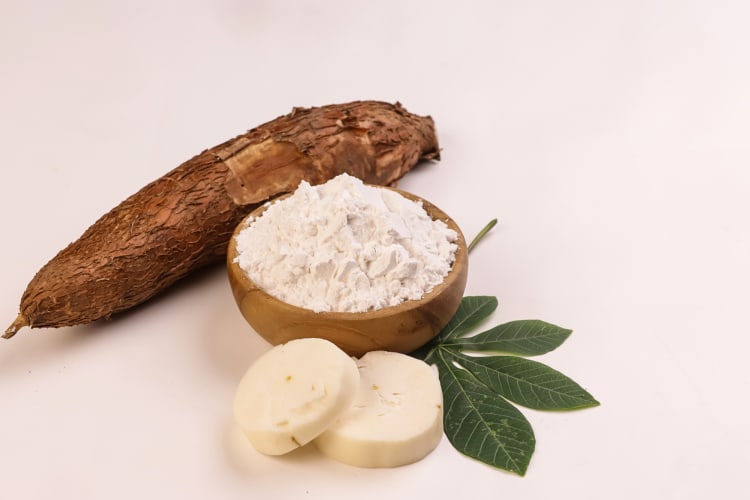
5. Xanthan Gum
Xanthan gum is created by combining sugars extracted from vegetables, wheat or dairy with the Xanthomonas campestris bacteria, forming a gel that is then dried into powder. It's a common ingredient in processed foods but can also make a great thickener in your kitchen. You can add it directly while cooking as a cornstarch substitute, but keep in mind that a little goes a long way; xanthan gum is best used sparingly.
This cornstarch substitute tends to break down under high heat, so it is best used at room temperature and in refrigerated foods like salad dressings, cold desserts, pie fillings and puddings. Be aware that it can also cause digestive issues in some people, but it does make a great addition to gluten-free baking. Swap out cornstarch for xanthan gum in a 1:1 ratio.
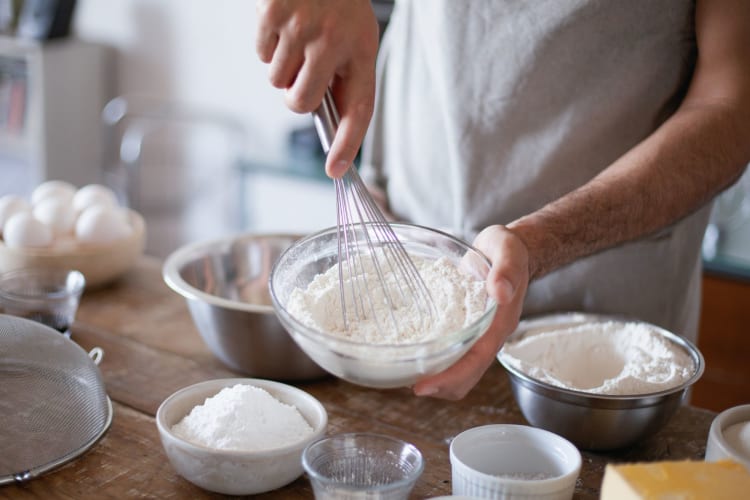
6. Arrowroot
This substance, drawn from the ground roots of the Maranta plant, is a great higher-fiber option and cornstarch substitute that has about the same thickening powers as cornstarch. It’s also completely gluten-free and plant-based. Free of taste or odor, arrowroot can be used to thicken any sauces and gravies.
However, it does not last as long as cornstarch or reheat well, so it's best used for foods that will be consumed immediately after preparation. When using arrowroot as a cornstarch replacement, a 1:1 ratio should suffice. It’s recommended that a liquid slurry of one part arrowroot to one part water be created before it gets added to your dish.
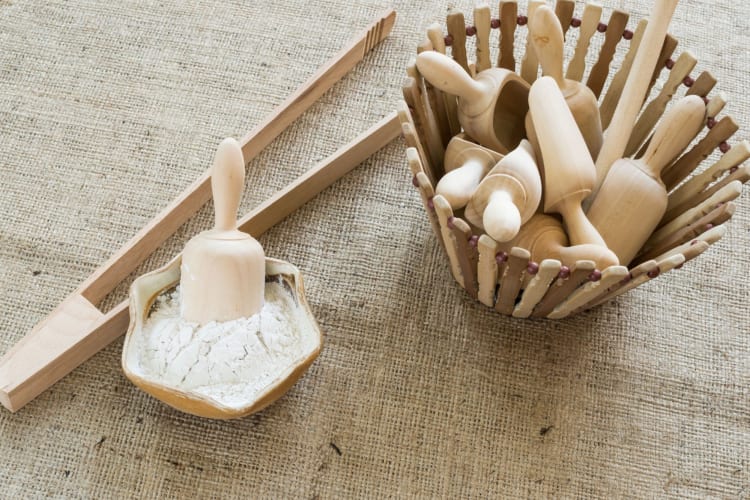
7. Ground Flaxseed
Ground flaxseed is another excellent option if you've been wondering: "What can be substituted for cornstarch?" This high-fiber cornstarch substitute makes a great thickening agent when jellified with water. Flaxseeds are known for their health benefits, being high in both omega-3 fatty acids and cancer-fighting nutrients, as well as helping digestion and fighting heart disease.
Try mixing one teaspoon of flaxseed with four teaspoons of water to equal the thickening power of two teaspoons of cornstarch. To thicken, add finely ground flaxseed directly to your liquid at the boiling point.
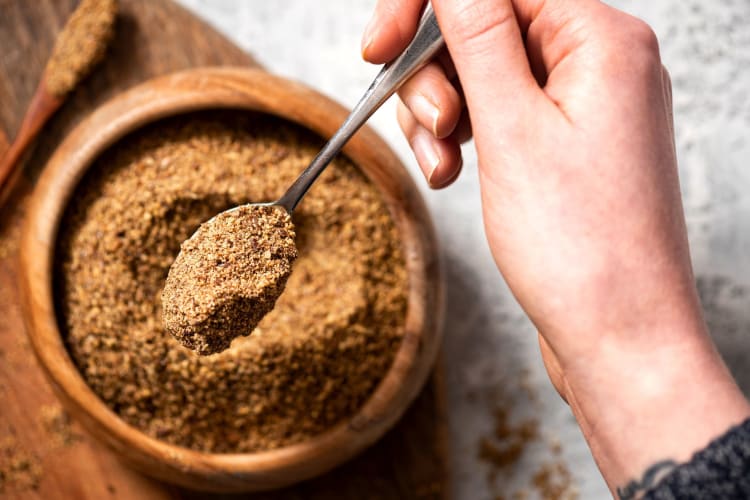
8. Glucomannan
Another plant-derived cornstarch substitute, this powdered root of the konjac plant is a probiotic and has several health benefits, including its ability to reduce cholesterol. It’s a far more powerful thickening agent by quantity, so use about an eighth of the amount of glucomannan as you would cornstarch.
Since glucomannan tends to clump in high heat, mix it with cold water before adding it to your dish as a cornstarch substitute.

9. Guar Gum
This plant-based alternative to cornstarch is extracted from guar beans. Guar gum is a great cornstarch substitute for gluten-free baking, giving elasticity to dough and a great texture to gluten-free treats.
It’s also one of the cornstarch alternatives not affected by heat or cold, so it’s perfect for both hot dishes and frozen foods, such as smoothies or gluten-free ice cream. Like xanthan gum, a little guar gum can go a long way, so use it sparingly when adding it to sauces and other liquids. Use an eighth of the amount of guar gum as you would cornstarch for successful results.
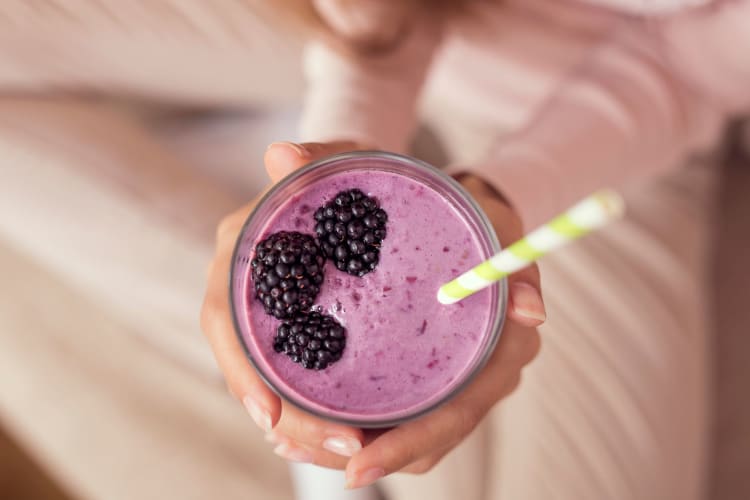
10. Psyllium husk
Those watching their carb intake will be glad to see psyllium husk on this list. This low-carb, plant-based soluble fiber works well as a cornstarch substitute. It’s a derivative of the Plantago ovata herb, which is grown across the world, but most commonly in India.
Psyllium husk is the perfect addition to pie fillings and sweet sauces because it immediately forms a gel-like consistency when combined with liquid. Since it has a much thicker consistency, use only half the amount as a replacement for cornstarch.

11. Water Chestnut Starch
While not as common as most other cornstarch substitutes on this list, water chestnut starch works just as well. Like rice flour, this alternative to cornstarch is a popular ingredient in Asian cuisine. As you may have gathered, this starch derives from the water chestnut; something you may not have guessed, however, is that the water chestnut is not a nut — it’s an aquatic vegetable.
With a neutral color and a clear, smooth texture, this gluten-free substitute for cornstarch blends seamlessly with other ingredients. Its effective thickening properties make it a great addition to sauces and gravies. When replacing cornstarch, it’s as easy as using a 1:1 ratio.

If you’ve ever questioned: “What can I substitute for cornstarch?”, there’s no longer a need to ask, as this article should have helped you discover many excellent cornstarch substitutes.
Whatever your desired results and dietary needs, these cornstarch substitutes are a great way to deal with an empty container of this popular kitchen staple. Plus, many of these cornstarch alternatives offer more fiber and greater nutritional benefits compared to the original.
For even more fun ways to explore your favorite foods, check out other experiences happening on Cozymeal.



FOOD FOR THOUGHT?
Join the conversation.